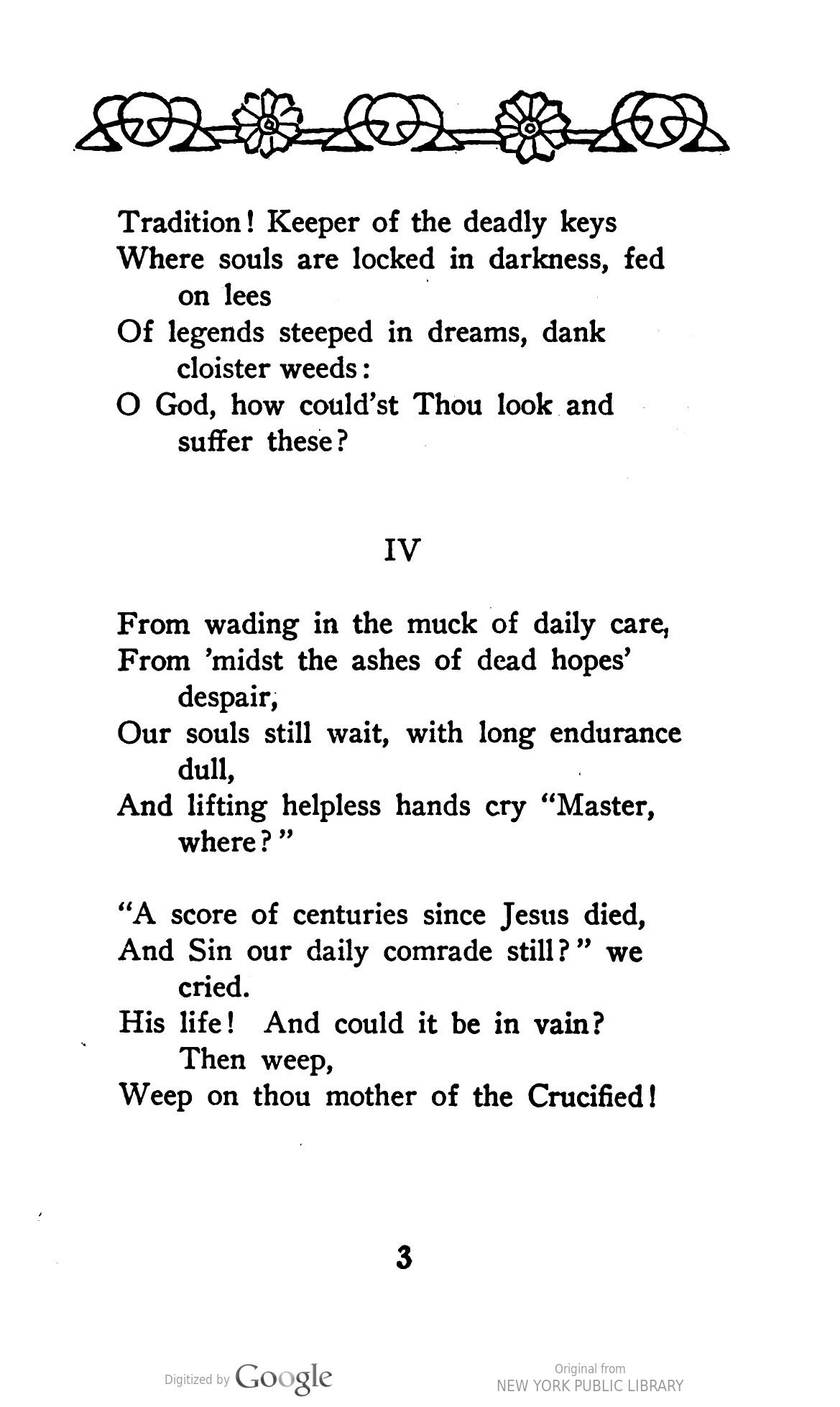Throughout the novel, Amelia Truesdell’s The Soul’s Rubáiyát does not have a lot of illustrations, as mentioned before (see Description of Edition). The images pictured do not match the text of the poem and do not enhance the context of the poem. The fourth stanza (see Figure 1) of both Rubáiyát of Omar Khayyám and The Soul’s Rubáiyát differ in terms of text and the themes explored. Truesdell’s fourth stanza in her edition emphasizes a shared communal view of finding meaning in religious ideals and searching for meaning through that lens.
The first two lines of this stanza focus on the idea that the soul and or self is stuck. The word “daily care” means the day-to-day idea of living. Truesdell’s hope in the line “From ‘midst the ashes of dead hopes’ despair” (Truesdell) is the wish that God would speak or come down to earth. The lack of capitalization in these first two lines indicates that she is referring to beliefs that followers of Christianity will often follow. Another Christian belief that is mentioned in the text is the idea of being crucified. The fourth stanza ends with the line “Weep on thou mother of the Crucified” (Truesdell). The capitalization of crucified is noteworthy in this context because it implies a reference to the Christian belief of being crucified. It also is a reference to the crucifixion of Jesus, a pivotal moment in the Bible that is supposed to represent his return. The introduction of Christian concepts within these key stanzas indicates that the poem will focus on religious subtext. These references also contrast the imagery that is presented at the beginning of the novel, the images at the beginning and end of the poem are meant to invoke images of Persia and the East.
Overall, there is an emphasis on community within the stanza. Specifically in lines 4, 8, and 9 “Our souls still wait, with long endurance dull” and “A score of centuries since Jesus died and sin our daily comrade still?” we cried” (Truesdell). The we in this stanza represents Christians. In these two lines, Truesdell is saying that the metaphorical phrasing of “our souls still wait” means that the people who wait for his return. These lines also imply a search for meaning. The idea is that despite the teachings that they know, they still don’t understand why their fellow man is still sinning.
Finally, one significant aspect of this stanza is that it does not match FitzGerald’s translation. Truesdell’s poem is a completely different story that still holds a similar meaning, but the way the subject is written has changed. FitzGerald’s original is only five lines and is focused on new seasons and changes. A lot of the religious figures and ideas present in the Rubáiyát of Omar Khayyám text are not the focus – centering concepts such as questioning tradition and using descriptive imagery to describe nature. The Soul’s Rubáiyát is focused on using Western religious figures and ideas to emphasize communal religious ideas and a search for meaning.
WORKS CITED:
Truesdell , Amelia W. The Soul’s Rubáiyát. AM Robertson, 1911.


